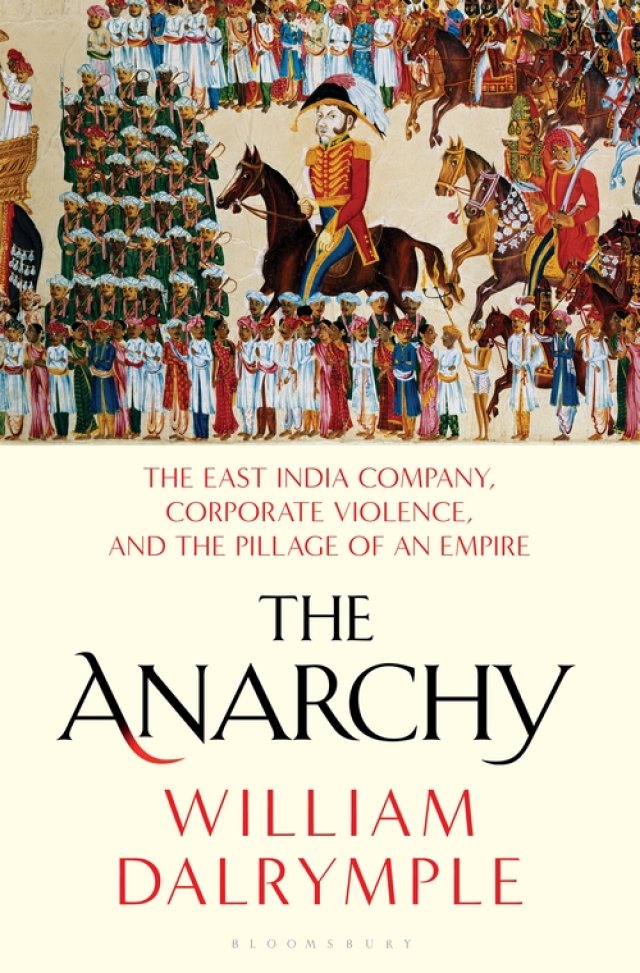
The Anarchy: The relentless rise of the East India Company
By William Dalrymple
Bloomsbury 2019
576 pp., $26.99
The English word “loot” is derived from the Hindi word lut, which means to steal, especially by plunder in time of war.
The word entered the English language in 1760 when Robert Clive, known to English history as “Clive of India”, returned from expanding the operations of the East India Company. He had gone to India a bankrupt, but through dominating the weakening Mughal empire, he returned as the richest man in Great Britain.
The machinations of the British East India Company explain a great deal about why India is still a poor and struggling country today.
The Company, as it was known, was established and received a Royal monopoly on trade with India during the time of Elizabeth I. At its zenith, it accounted for half of all world trade. It controlled huge swaths of India using a private army twice the size of the British Army and invaded and colonised Hong Kong.
To put it mildly, it did not use humane methods.
Dalrymple records that previous marauders, “remembered as cruel and violent” had terrorised and looted Bengal. But the Company’s plunder “was more orderly and methodical ... its greed was arguably deadlier because it was more skilful and relentless and, above all, more permanent.”
Originally, the Company had simply traded under the protection of Indian rulers. The Company shipped in enormous amounts of bullion to pay for its operations, but that all changed as it militarily inserted itself into Indian power structures.
Internal frictions weakened the Mughal Empire. External pressures from Afghan raiders and other attackers provided an opening for the Company to firstly establish independent forts and later to militarily defeat the Mughals.
The Company chose to rule indirectly, unctuously paying lip service to Mughal authority. A French traveller, the Comte de Modave, observed Company officials “committing the most atrocious acts of tyranny”.
“British soldiers and traders permit themselves all sorts of liberties in the pursuit of private profit,” he wrote. “The country lies groaning under the Anarchy, laws have no power of sanction, morals are corrupt to the ultimate degree, the people groan under a multitude of vexations.”
Winning the right to directly tax the people of Bengal and other provinces meant the Company no longer funded its operations with imported gold. Its trading was funded by the Indian people.
As Clive explained to the Company board in London, the land revenues would “defray all the expenses of the investment [of goods exported to Britain], furnish the whole of the China treasure [the money used to buy tea from China] and answer all the demands of all your other settlements in India, and still leave a considerable balance in your treasury besides.”
It did not take long for the Company’s plundering to create disaster, which appeared in the great Bengal famine of 1770.
A monsoon failure caused crop failures, which were not uncommon in Indian history. Such events had been met during the Mughal Empire by sending food from other areas and organising public works so that impoverished people had enough money to feed themselves.
The Company had no interest in such things. As soon as the rice scarcity was noticed, it bought up remaining stocks and inflated prices.
The Company allowed no tax relief during the famine and those who failed to pay were hanged. In 1771, the Company Council was pleased to report that “not withstanding the great severity of the late famine, and the great reduction of people thereby, some increase [in revenue] has been made”.
The oppression of local peasants was firmly established by Company administrator Lord Cornwallis in 1793 in his “Permanent Settlement of Bengal”.
The Mughal rulers had supervised and organised villages using a network of local village agents called zamindars. The zamindars had collected taxes and also dispersed seeds and loans to ensure stable agriculture.
Cornwallis changed their status from paternalistic officials, making them landlords with fixed land payments to the Company.
The zamindars were free to ruthlessly exact any amount of revenue on top of their Company payments, which they proceeded to do. Their hideous landlordism continues to this day in India and is a cause of violence.
Dalrymple is excellent at explaining the intricacies of the power plays in the Company’s interactions with India. But strangely, he only devotes one paragraph to the 1857 First Indian War of Independence – which the British call the Indian Mutiny.
He says it was “probably the bloodiest episode in the entire history of British colonialism”. To crush the rebellion “the Company distinguished itself for a final time by hanging and murdering many tens of thousands of suspected rebels”.
After the Company crushed the revolt, the British government stepped in and took control of India.
Dalrymple is a purveyor of the “history is made by great men” school of thinking, which makes for a satisfying ripping yarn. He is a skilled story-teller and gives equal space to the Indian side of the story.
However, he makes no attempt to explain why the mighty Mughal Empire crumbled when opposed by a band of corporate pirates. The explanation is that Mughal feudalism, as splendid as it was, was overwhelmed by the rising capitalism represented by the Company.
Time and again Indian resistance was unravelled when incapable individuals inherited the Empire. The Company, being run on a totally different basis, could choose the best individuals to advance its interests.
What became of the East India Company after its holdings were nationalised by the Crown in 1859?
Its brand name is now owned by a Gujarati shopkeeper who sells “condiments and fine foods” in London’s West End.